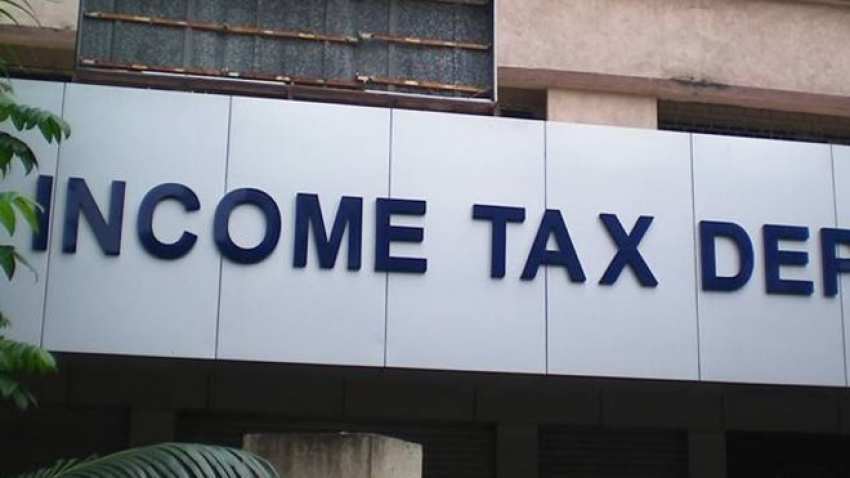Waiting for the income tax refund? Get your money back, just do this
Income tax refund: In case a taxpayer has paid more money in taxes than her total tax liability, she will be eligible for an income tax refund and that too in a timely manner.

Income tax refund: In case a taxpayer has paid taxes in excess of her total tax liability to the Income-Tax department, she will be eligible for a refund. The refund arises when the sum of advance tax paid, self-assessed tax paid and tax deducted at source (TDS) against the PAN of the taxpayer is higher than his actual tax liability. The taxpayer can claim an income tax refund while filing tax returns for the financial year. Once the income tax return has been filed and e-verified by the assessee, the department starts processing the returns and determines the refund payable. After the returns are processed, a communication is sent to the taxpayer via SMS and email.
Speaking on the Income Tax refund norms, Archit Gupta, Founder and CEO at ClearTax said, "The communication is received as an intimation under section 143(1) of the Income Tax Act. This intimation reflects the amount of refund that will be credited to your bank account along with a refund sequence number. The refund amount may differ from the amount claimed by the assessee in his income tax returns. This is because the intimation is generated after adjusting any arithmetical errors appearing in the return, any incorrect claim or any loss brought forward being disallowed."
See Zee Business Live TV streaming below:
The Income-Tax department processes the returns and issues the refund via a refund banker, the State Bank of India (SBI). From FY 2018-19 onwards, only e-refunds will be issued by the departments to the bank accounts linked with PAN and pre-validated in the e-filing portal. The due date to file income tax returns for FY 2018-19 is already gone. Many individuals have already received their intimation under section 143(1) along with the refunds. In case you filed your tax returns in the days towards the deadline, the department may take a while to process your returns.
Archit went on to add that taxpayers can log-in to the income tax e-filing website incometaxindiaefiling.gov.in and check the status of their refund. Alternatively, they can visit ‘TIN-NSDL website’, enter the PAN, relevant assessment year and check the status of your tax refund.
Archit Gupta at ClearTax said that the messaging displayed under the refund status can be of different types and conveys the information below:
1] Refund returned: In case your bank details are incorrect, the refund issued is returned to the Income-Tax department.
2] Processed through direct credit but failed: It means that the refund banker, SBI has credited the refund amount to the bank account but it failed due to any of the following reasons:
a) Bank account details are incorrect or account is closed;
b) An account holder may be deceased;
c) Bank account stands inoperational; and
d) It is a non-resident Indian (NRI) account.
3] Refund processed through NEFT/NECS but failed: This message is displayed when the refund processed through NEFT/NECS has failed. It might be because
of the incorrect bank account number, incorrect bank name or wrong IFSC code filled during filing income tax returns.
4] ECS refund advice received but not reflecting in your bank account: It might happen that you have received an email from SBI with the details
of the refund credited to your bank account.
If the same is not reflected in your bank account, you can check with your bank whether the amount has been credited to the wrong account. You can also send an email to itro@sbi.co.in for further queries. One who has savings account with other banks can contact for the same with the given contact information of their respective banks.
Get Latest Business News, Stock Market Updates and Videos; Check your tax outgo through Income Tax Calculator and save money through our Personal Finance coverage. Check Business Breaking News Live on Zee Business Twitter and Facebook. Subscribe on YouTube.
RECOMMENDED STORIES

EPFO Pension Schemes: Early pension, retirement pension, nominee pension and 4 other pension schemes that every private sector employee should know

Tata Motors, Muthoot Finance and 3 more: Axis Direct recommends buying these stocks for 2 weeks; check targets, stop losses
07:59 PM IST











 Income tax return filer base up 2.2 times in 10 years, 5 times growth in Rs 50 lakh-plus income category: Sources
Income tax return filer base up 2.2 times in 10 years, 5 times growth in Rs 50 lakh-plus income category: Sources  This is India's only tax-free state, residents earn crores without paying Income Tax
This is India's only tax-free state, residents earn crores without paying Income Tax I-T Act review: Government to invite suggestions from industry next month
I-T Act review: Government to invite suggestions from industry next month Net direct tax collections grow 15% to Rs 9.92 lakh crore in a year; advance tax collections up 19%
Net direct tax collections grow 15% to Rs 9.92 lakh crore in a year; advance tax collections up 19% Income Tax Day 2024: Nirmala Sitharaman to preside over celebrations in New Delhi on Wednesday
Income Tax Day 2024: Nirmala Sitharaman to preside over celebrations in New Delhi on Wednesday